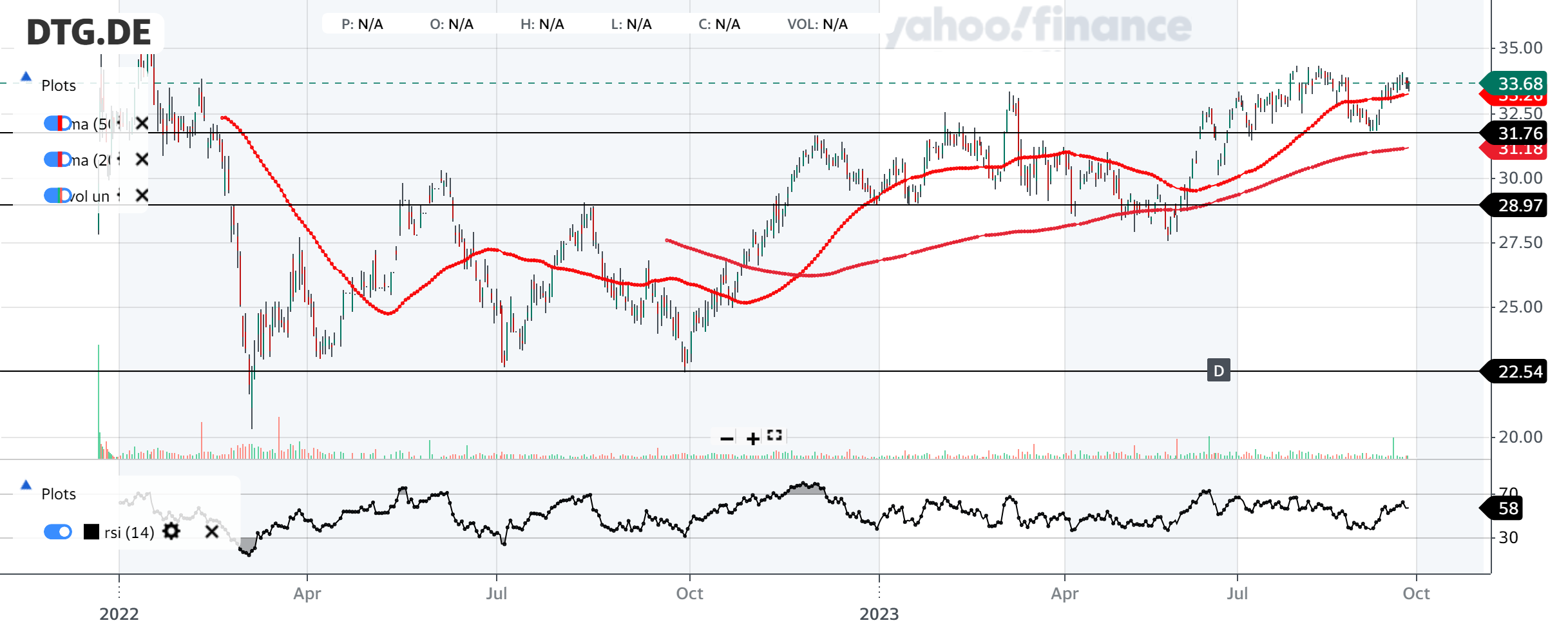Daimler Truck Holding (DGTHF/DTG.DE)

Fundamental analysis
Daimler Truck Holding is a very young, yet very old company. The company manufactures trucks and buses. The company was formed in 2019 by splitting from Daimler AG (now renamed Mercedes-Benz Group) with the intention of going public. The company did so in 2021. The Mercedes-Benz Group retained 30% of the shares and is thus the company’s largest shareholder. The production of buses and trucks in Germany itself has a history going back 125 years.
The company owns the brands Mercedes-Benz (buses and trucks, not passenger vehicles), Freightliner, Western Star, Thomas built buses, Fuso, Bharabenz, Setra, Daimler Truck Financial services.
The company manufactures and markets its products worldwide in the Truck North America, Mercedes-Benz, Truck Asia, Daimler Buses, Daimler Truck Financial Services segments.
The heavy equipment segment has good prospects in the USA (growth of up to 19%), while in Germany it is only up 9%.
The IPO took place in December 2021 at a price of €28 per share.
The company is the market leader in many markets in the truck segment. It has a 40% market share in the US, 21% in the EU and 26% in Brazil.
In the bus segment, it has 26% of the market in the EU, 47% in Brazil and 43% in Mexico.
The ISM of manufacturing companies is below 50. This signals a reduction in demand for products.
Results
EBIT for the second quarter (EUR 1.378 billion) was above expectations of EUR 1.280 billion. The company is performing well across all market segments.
Globally, Daimler sold 131,888 units of equipment (+9% compared to Q2 2022 and 120,961 units delivered).
The company announced that it intends to pay out 40-60% of profits and also intends to buy back up to €2 billion worth of shares over the next two years.
The company has a higher order backlog, but new orders are in strong decline.
Technical analysis
The stock is in a slight uptrend according to the moving averages.
The RSI is in the neutral zone.
Due to the short history of the stock, long term supports and resistances are yet to form. The price is currently approaching its high, which is always resistance.
Conclusion
Buying its own shares for 2 billion Euro is a big step for the company and for investors. Along with the prospect of a dividend, the company may be attractive to long-term investors. Furthermore, despite the general downturn in the manufacturing segment, Daimler Truck has a high order backlog, but new orders are not coming in as much as the company would like. This could be a problem in the future. The question remains to what extent the company’s short- and long-term prospects are reflected in the current share price. Technical analysis now points to gradual growth, but investors need to watch the price around the absolute high of the stock. A break of the high may mean continued growth, a bounce off the high may mean a drop in price.